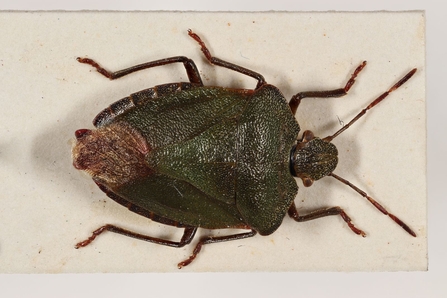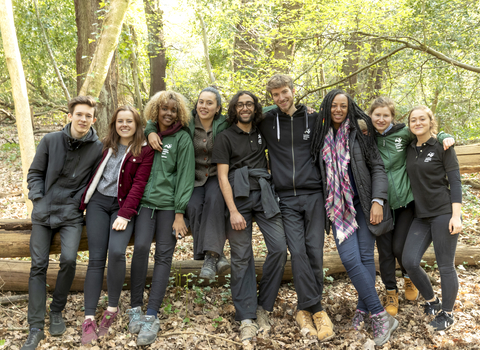Through the labyrinth of precisely measured specimen boxes and perfectly regulated air-conditioning systems, we gained exclusive access to Natural History Museum invertebrate collections. Here the team showed us the art of focus stacking, a digital photo processing technique where multiple images are taken of the specimen at different focus distances, then merged together to create a final image with a huge depth of field.
Despite it being an initially a tricky technique to grasp; once you’d played around it a bit it was easy to see how you could spend a lifetime playing around with the settings! Subsequently, I found myself sitting there for hours choosing interesting subjects to position and photograph.

Green shield bug slide eDNA project credit Liz Clark-Lim
The Angela Marmont Centre is a fantastic learning environment, offering a vast pool of knowledge and technological innovation. It was amazing to be granted the opportunity to work with the talented staff and see such a variety of species up close. I learnt how to appreciate the tiny differences in detail, which I may have not even noticed in everyday circumstances.
Not only was the collection extensive, but each specimen presented itself with a hidden story. The Centre runs a drop-in identification service which has led to some unusual specimens travelling from far-off lands. But I’ll leave that as a mystery!
Images taken of specimens from the archive will be used to help illustrate and distinguish different species in our upcoming invertebrate species ID handbook.
Stay tuned for further updates on the project.
Photographs by Liz Clark-Lim

Young people on the Keeping it Wild programme credit Penny Dixie
About Keeping it Wild
This is a new project, funded by National Lottery Heritage Fund, that will empower and inspire 600 young people aged 11-25, from backgrounds currently under-represented in natural heritage, to gain vital skills while discovering, conserving and sharing their experiences of the capital’s wild spaces. 16-25-year-olds are invited to apply for a 12 week Traineeship, paid via a bursary. They based at one of our reserves, where they spend time learning from the London Wildlife Trust team, gaining valuable practical skills in urban nature conservation. Additional support for the Traineeships has been generously donated by the Worshipful Company of Tallow Chandlers.
